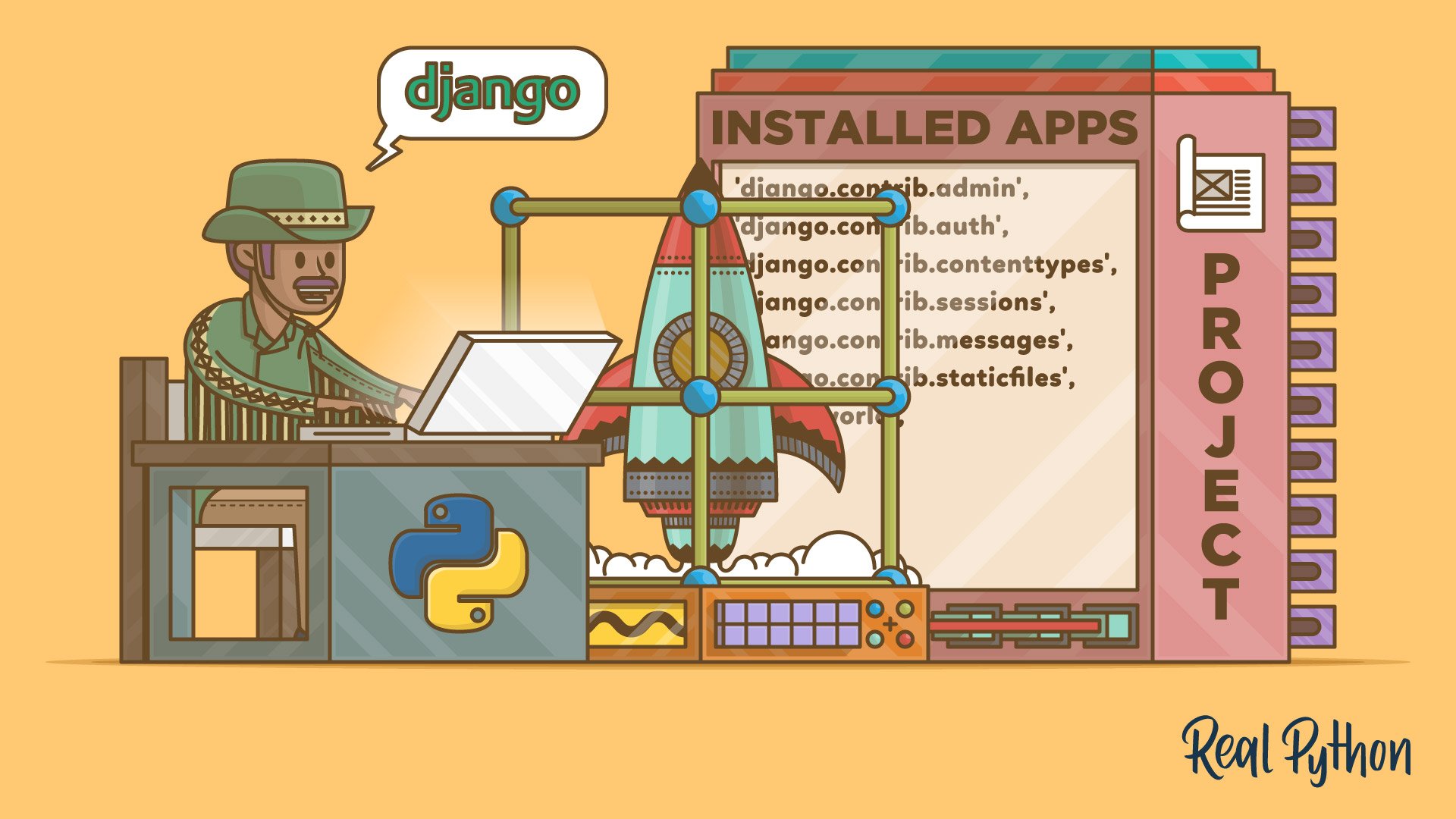Django is a powerful Python web framework for creating complex applications. It follows the Model-View-Template (MVT) architecture and includes built-in features like authentication, an admin interface, and database management.
In this tutorial, you’ll create a portfolio app step by step, gaining hands-on experience with Django’s core features. Along the way, you’ll work with models, views, templates, and the admin interface to build a fully functional web application. This hands-on approach will demystify Django’s structure and functionality.
By the end of this tutorial, you’ll understand that:
- Django projects begin with setting up a development environment and creating a project structure.
- Learning HTML and CSS before Django can help with styling templates, but it’s not mandatory.
- Django is used for building web applications with Python, offering built-in features and scalability.
- A real-life example of Django is a portfolio website that showcases projects and manages content.
At the end of this tutorial, you’ll have a working portfolio website to showcase your projects. If you’re curious about how the final source code looks, then you can click the link below:
Get Your Code:Click here to download the Python source code for your Django portfolio project.
Take the Quiz: Test your knowledge with our interactive “Get Started With Django: Build a Portfolio App” quiz. You’ll receive a score upon completion to help you track your learning progress:
Interactive Quiz
Get Started With Django: Build a Portfolio AppIn this quiz, you'll test your understanding of Django, a fully featured Python web framework. By working through this quiz, you'll revisit the steps to create a fully functioning web application and learn about some of Django's most important features.
Learn Django
There are endless web development frameworks out there, so why should you learn Django over any of the others? First of all, it’s written in Python, one of the most readable and beginner-friendly programming languages out there.
Note: This tutorial assumes an intermediate knowledge of the Python language. If you’re new to programming with Python, then check out the Python Basics learning path or the introductory course.
The second reason you should learn Django is the scope of its features. When building a website, you don’t need to rely on any external libraries or packages if you choose Django. This means that you don’t need to learn how to use anything else, and the syntax is seamless because you’re using only one framework.
There’s also the added benefit that Django is straightforward to update, since the core functionality is in one package. If you do find yourself needing to add extra features, there are several external libraries that you can use to enhance your site.
One of the great things about the Django framework is its in-depth documentation. It has detailed documentation on every aspect of Django and also has great examples and even a tutorial to get you started.
There’s also a fantastic community of Django developers, so if you get stuck, there’s almost always a way forward by either checking the docs or asking the community.
Django is a high-level web application framework with loads of features. It’s great for anyone new to web development due to its fantastic documentation, and it’s especially great if you’re also familiar with Python.
Understand the Structure of a Django Website
A Django website consists of a single project that’s split into separate apps. The idea is that each app handles a self-contained task that the site needs to perform. As an example, imagine an application like Instagram. There are several different tasks that it needs to perform:
- User management: Logging in and out, registering, and so on
- The image feed: Uploading, editing, and displaying images
- Private messaging: Sending messages between users and providing notifications
These are each separate pieces of functionality, so if this example were a Django site, then each piece of functionality would be a different Django app inside a single Django project.
Note: A Django project contains at least one app. But even when there are more apps in the Django project, you commonly refer to a Django project as a web app.
The Django project holds some configurations that apply to the project as a whole, such as project settings, URLs, shared templates and static files. Each application can have its own database, and it’ll have its own functions to control how it displays data to the user in HTML templates.
Each application also has its own URLs as well as its own HTML templates and static files, such as JavaScript and CSS.
Django apps are structured so that there’s a separation of logic. It supports the model-view-controller pattern, which is the architecture for most web frameworks. The basic principle is that each application includes three separate files that handle the three main pieces of logic separately:
- Model defines the data structure. This is usually the database description and often the base layer to an application.
- View displays some or all of the data to the user with HTML and CSS.
- Controller handles how the database and the view interact.
If you want to learn more about the MVC pattern, then check out Model-View-Controller (MVC) Explained – With Legos.
Read the full article at https://realpython.com/get-started-with-django-1/ »
[ Improve Your Python With 🐍 Python Tricks 💌 – Get a short & sweet Python Trick delivered to your inbox every couple of days. >> Click here to learn more and see examples ]
